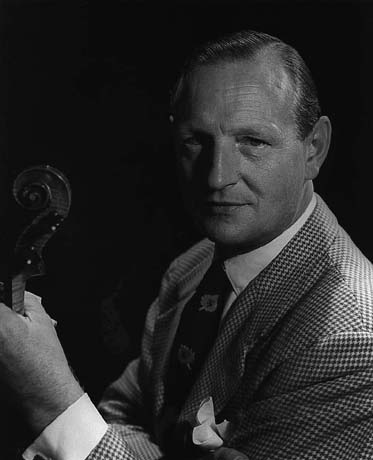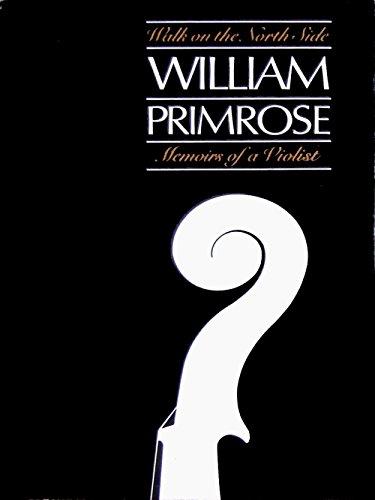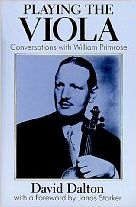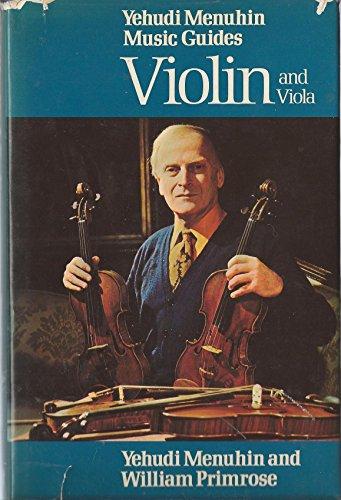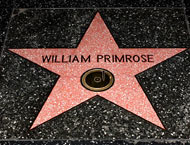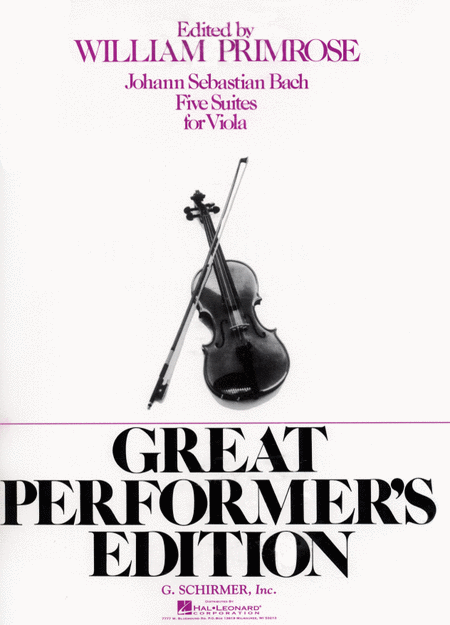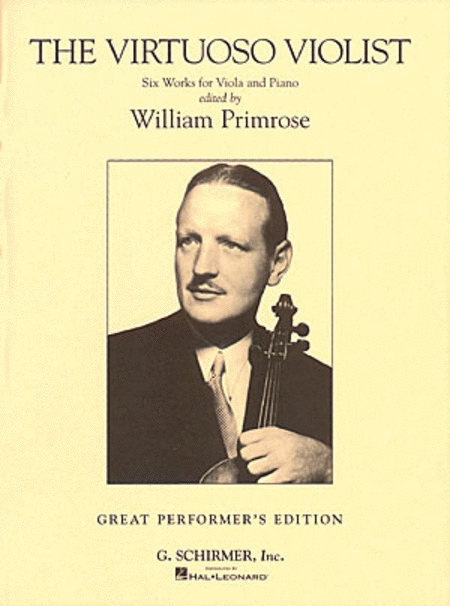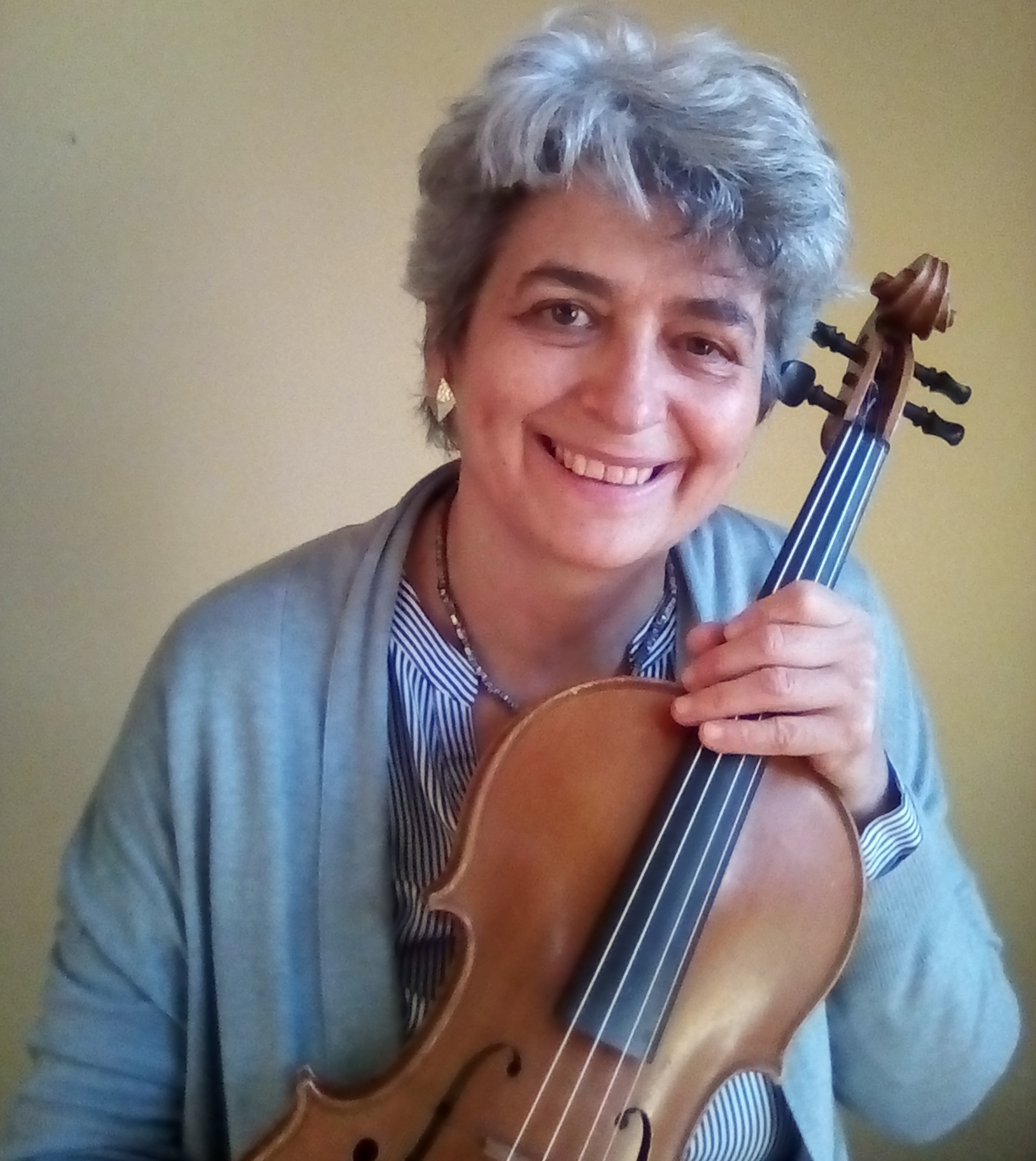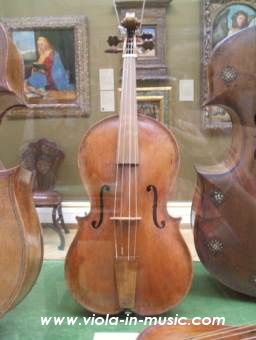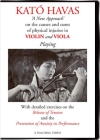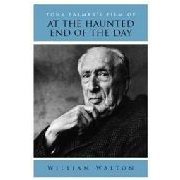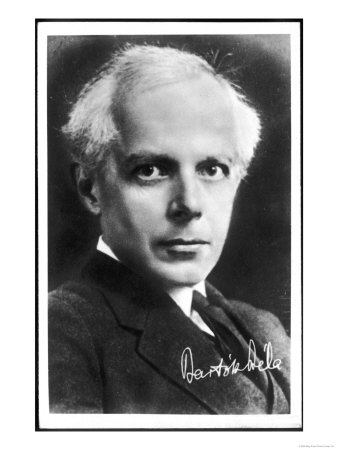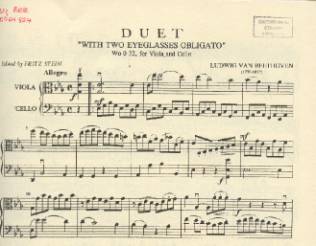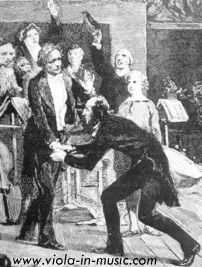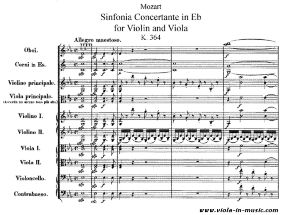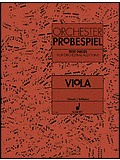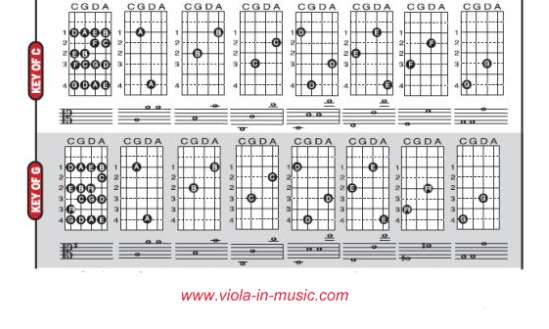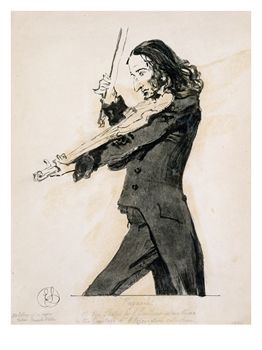
William Primrose
Viola virtuoso and first viola star
Buy Viola in Music's Collection of
13 famous tunes
Read more
William Primrose is my viola idol! There is something special in his playing, even (or maybe especially) when he plays just a few slow notes, that I find very touching, while instead I find a lot of other players are stiff, soulless, dead. His playing is perfectly accurate yet flexible, fluid, with a myriad of nuances.
I first heard him play when I bought an LP with his recording of Walton Viola Concerto and fell in love with his playing.
He was following in Lionel Tertis footsteps, continuing to promote the viola as a solo instrument, and he really became an international star. He also commissioned a good number of compositions, the most famous of which are Bartok Viola concerto and Lachrimae by Britten.
Primrose was famous for his ease at playing very technically demanding works. He really placed the viola at the same level of the violin as a solo instrument with virtuosic possibilities and even recorded Paganini's Caprices on the viola, something unthinkable at that time (and still nowadays not a little challenge for any player!)
He performed with the top musicians of his time, conductors like Adrian Boult, Leopold Stokowsky, Thomas Beecham, Arturo Toscanini, the violinists Eugene Ysaÿe, Fritz Kreisler, Jascha Heifetz, the violist Lionel Tertis (when Primrose was still a violinist), the pianist Arthur Rubinstein, the cellist Piatigorsky and others and made many recordings that are still available.
With Kreisler he recorded the quartet Kreisler himself had composed.
William Primrose performs Kreisler
William Primrose plays Fritz Kreisler Liebesleid
Primrose books
William Primrose wrote some books and many transcriptions for viola. I learnt about him by reading his autobiography, Walk on the North side (that you can find it in second-hand shops, if you click on the title) and his other book Playing the viola - Conversation with William Primrose and other texts I found. The second book is more technical, suitable for viola (ans also violin) players. Instead, the first one is more a story of his life, a good read for every music lover who like to read about gone-by times in music.
He was a musician with many interests, from boxe to chess, to cricket, with a love for travelling and even airplane piloting!
Youth in Glasgow
William Primrose was born in Glasgow, in Scotland, on 23 August 1904. His father was a violin player and teacher and Primrose tells that his first musical memories were of himself as a child watching his father teach and copying the movements of the arms, holding two wooden sticks in his hands.
When Primrose was four year old, his father gave him a small violin and little child started to play and having violin lessons with a teacher. As a result Primrose made his first public appearance on a concert platform at twelve performing Mendelssohn violin concerto.
Primrose's teacher had a quartet and his father would play the viola in it. As a matter fact, his father owned an Amati brothers viola which he kept in a cabinet. Primrose tells that he was fascinated by this instrument and when his father was not around, he would take it out of its case and play it "with considerable satisfaction", as he says in his memoirs. At that time he would consider playing the viola only as a way to play chamber music and quartet, which he loved.
William Primrose plays Halvorsen Passacaglia with Jascha Heifetz
Studies
At the age of 15 Primrose entered the Guildhall School of Music in London (very distant form his home). Today you can see his name on a plaque at the entrance. In London he started playing concert and later doing recordings and radio broadcasting, alwayas thinking also about playing the viola. He says he slightly neglected his studies but enjoyed his life in London.
A friend suggested him to go to Belgium and study with Eugène Ysaÿe so he did, starting at 21 for about three years. He says he didn't have much money to pay for his lessons but was lucky enough one to win a good sum at a local casino!
At Ysaÿe's place there were usually many guests and musical evening with chamber music played. Primrose was occasionally invited and in one of those occasions Ysaÿe suggested he should switch to the viola. This helped him feel more confident in his choice when most of people around him though it was a "musical suicide".
The reputation of the viola was very bad, so it was quite bold of him to decide to leave the violin and embark in this adventure. His father was gravely shocked. To him, playing the viola equalled being a failure as a violinist.
Viola inspiration from Lionel Tertis
In 1928, Primrose violinist performed Mozart's (another viola player)
Sinfonia Concertante with the violist Lionel Tertis and by that time he had finally decides to switch to the viola, although he didn't mention it to anyone.
Professional Violist
The opportunity to really start with the viola came in 1930 when Primrose was invited to join the London String Quartet to replace their violist when they were touring in South America. They travelled successfully although those were the years of the depression, until the financial situation made it too difficult and the quartet disbanded five years later.
Later in 1937, Primrose jonined the NBC Symphony orchestra that was then conducted by Arturo Toscanini. With other members of the orchestra they formed a quartet that was named Primrose Quartet. Unfortunately there aren't many recording of them.
William Primrose plays his own transcription of Paganini "La campanella"
Solo viola career
About four years later Primrose heard that Toscanini was going to leave the NBC so he himself left the orchestra to venture on the solo career path.
At that time there was nothing in sight for him. One day, during a walk in New York, Primrose met the famous tenor Richard Crooks who asked him if he could join him in a series of joint recitals. That was the type of concerts they used to give: solo tenor works alternating with a solo instrument, both with piano. This occasion gave the title to the book Walk on the North side, dedicated to Crooks, as he was walking on the North side of the 57th street.
During his solo career Primrose asked many composer to write works for him and as a result the viola repertoire has been greatly enriched. Read how he comissioned Bartok his concerto.
Primrose teacher
Primrose enjoyed teaching. He taught in the USA at the Curtis Institute of Music in Philadelphia, at the University of California in Los Angeles, Indiana University, in Japan at the Tokyo University of Fine Arts and Music for several years. Eventually he taught at Brigham Young University in Utah, where he died.
All his music scores and memorabilia have been donated to the Brigham Young
University and have formed the PIVA, Primrose International Viola Archive.
His book Playing the viola - Conversation with William Primrose is very useful for any viola (ans also violin) players, students, teachers. It is more technical but in form of dialogue with David Dalton who studied with him and then taught at BYU and curated the PIVA. It analyses all aspects of viola playing: the teacher-student relationship, playing the viola coming from the violin, how to practice, repertoire, stage presence and manners, performance practice, the left hand (you can even get to know his own fingerings in some works), programs, recordings, competitions and more.
It's like having lessons with Primrose himself, which is really invaluable. It always surprises me that not many violists know about it. A must have.
Another book where Primrose wrote is this Violin & Viola by Menuhin. It includes a short section about the viola. Click here to buy
William Primrose is a Hollywood star!
Primrose made a large number of recordings in his time, especially considering that he was playing the viola, a practically unknown instrument.
He actually started recording with the violin always
thinking about playing the viola in chamber music. Among other things,
Primrose made the first recording of Berlioz's Harold in Italy.
For his achievement in the discographic world and the large number of recordings made, in 1960 he was listed as a Star of Recording on the Hollywood Walk of Fame when it was inaugurated. By the way, also his friend Richard Crooks has a star there. If you fancy going to see it, its address is 6801 Hollywood Blvd., Los Angeles, CA 90028, United States. Take a photo then come back and post it here!
Buy Primrose sheet music and CDs
More sheet music, works transcribed or edited by William Primrose
Go from William Primrose to Famous viola players

Tweets by @MonicaCuneViola

Play easily without pain &
nerves
Related pages
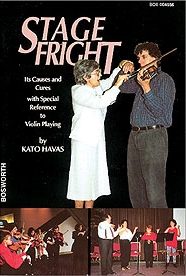 Read the book "Stage fright - Causes and cures", by Kato Havas, and play freely
Read the book "Stage fright - Causes and cures", by Kato Havas, and play freelyHistory of the viola
Lira-viola
Buy Viola in Music's Collection of 13 famous tunes (19 pages)
£7.99 and download them instantly
They are in their original keys, so you can play them in sessions with other instruments
Jesu, joy of man's desiring
Michael Turner’s waltz (2 versions)
The
greenwood tree
The south wind
Fanny Power
Ye banks and braes
Skye boat song
My Bonnie
My love is
like a red, red rose
Sportsman’s hornpipe
The road to Lisdoonvarna
Danny Boy (Londonderry Air)
Iron legs
Do you like
Viola in Music?
Support it by buying sheet music here
Download Sheet Music
|
Best viola books: History, Tertis, Primrose, Menuhin, Kugel and more
Beethoven's "Eyeglasses Duo" for viola and cello: why this funny name?
Paganini kisses Berlioz’s hands after hearing
Harold in Italy, Symphony with solo viola,
originally composed for him
Mozart's
Sinfonia Concertante for violin, viola and orchestra
Viola orchestral parts
and solos
